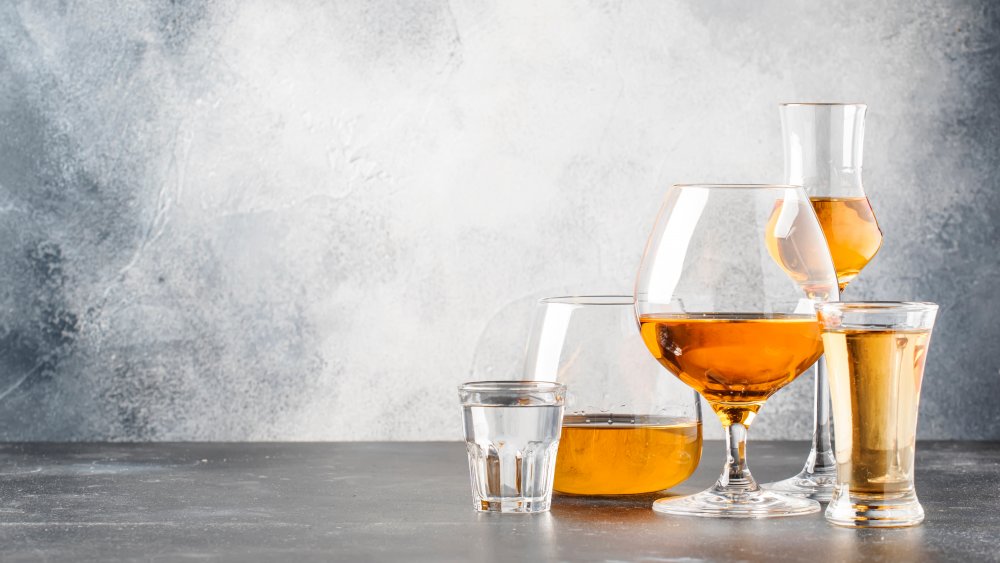Here's The Difference Between Gold And Silver Tequila
In three years, tequila has risen from the land of salt- and lime- shots and frozen margaritas to being one of the fastest-growing spirit markets in 2020 (via New Food Magazine). While it's obvious that agave-based spirits are on the rise, the distinctions between the different types of tequilas out there might not be obvious. So it's time to get a little intel. For starters, much like champagne, tequila's name comes from the place where it' originated. This means that legally, tequila can only be made in just a few places within close proximity to the town of Tequila (via Decanter). To be labeled as tequila, the spirit must be distilled from the agave plant, a large spiky succulent that is native to the areas where tequila is produced.
Within the tequila family, there are two tiers, premium made from 100% agave and a lower end version that must be made from at least 51% agave while the remaining 49% can be made from less pricey and precious ingredients. Beyond the basics of where tequila comes from and what it's made, there are differences between the flavor profiles and best uses for the different varieties and how they're categorized. For example, you may have heard of gold and silver tequila, but what do those categories mean?
Visually, it's easy to tell the difference between silver and gold tequilas
To the untrained eye, visually discerning the differences between types of tequilas out there is relatively simple as the spirit it generally either clear or gold in color. But when picking up bottles, there are all sorts of terms that populate labels. Silver and gold are not actually categories, according to Vinepair, but are treated as such by cheaper brands such as Jose Cuervo. The first is relatively straightforward: silver tequila is the clear, unaged spirit. Gold is where things get a little tricky.
According to Thrillist, gold tequila can be broken down into two varieties. The first is the sort of stuff that has given so many folks shot-induced PTSD, i.e., the cheap stuff that's made from a less than pure mix of agave plus artificial colors and flavorings such as oak extract and caramel color. The second is a less common blend of blanco (silver), or unaged, tequila made from 100% agave, and aged tequila. Differentiating the two types of tequilas can be a bit daunting, so the folks at Sip Tequila have broken it down into an easy-to-understand formula – basically, if it makes your head hurt the next day, you're dealing with the cheap stuff, and if it's the kind of gold that makes for an enjoyable sip, you've got your hands on the good kind of gold.

